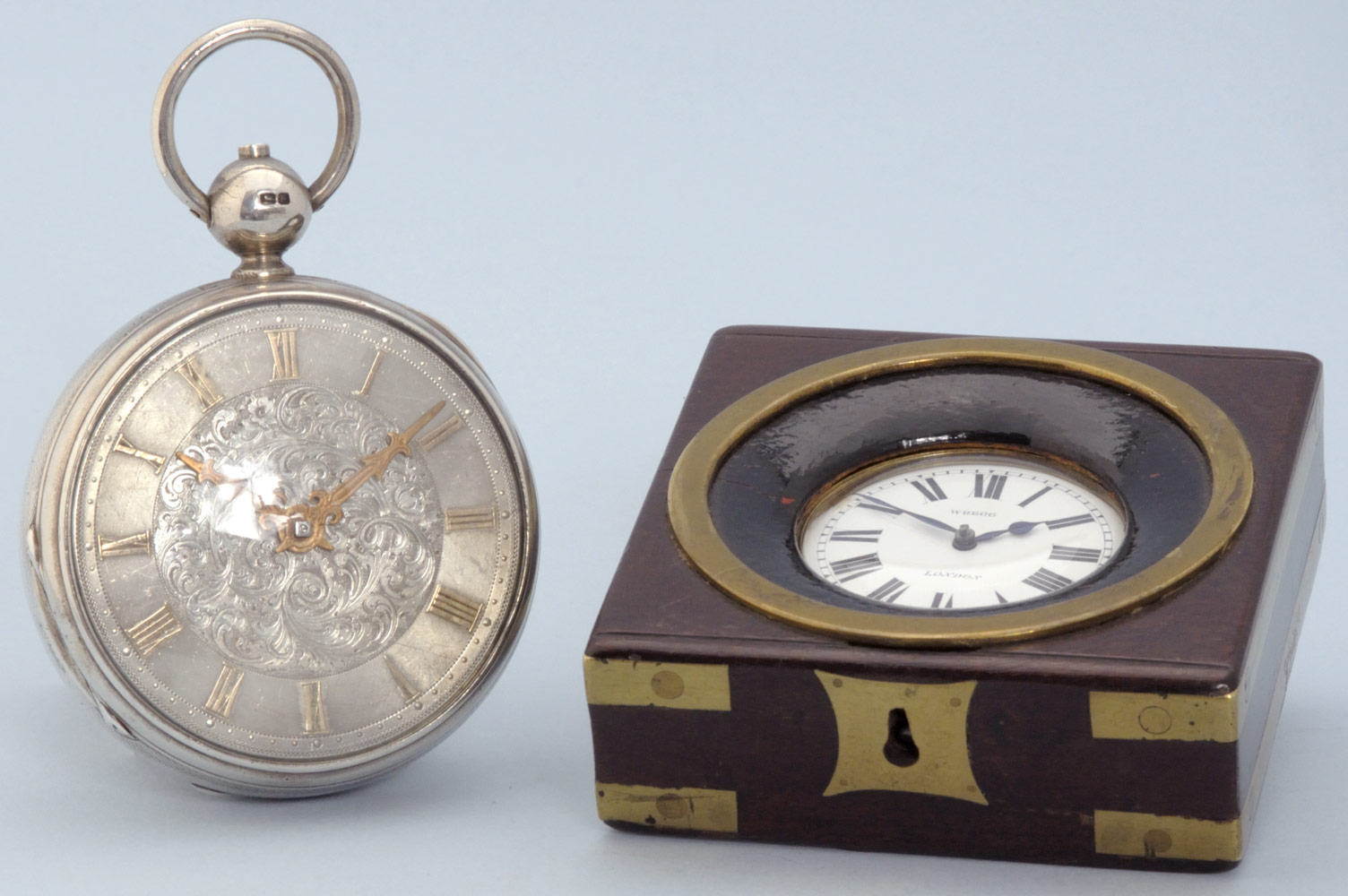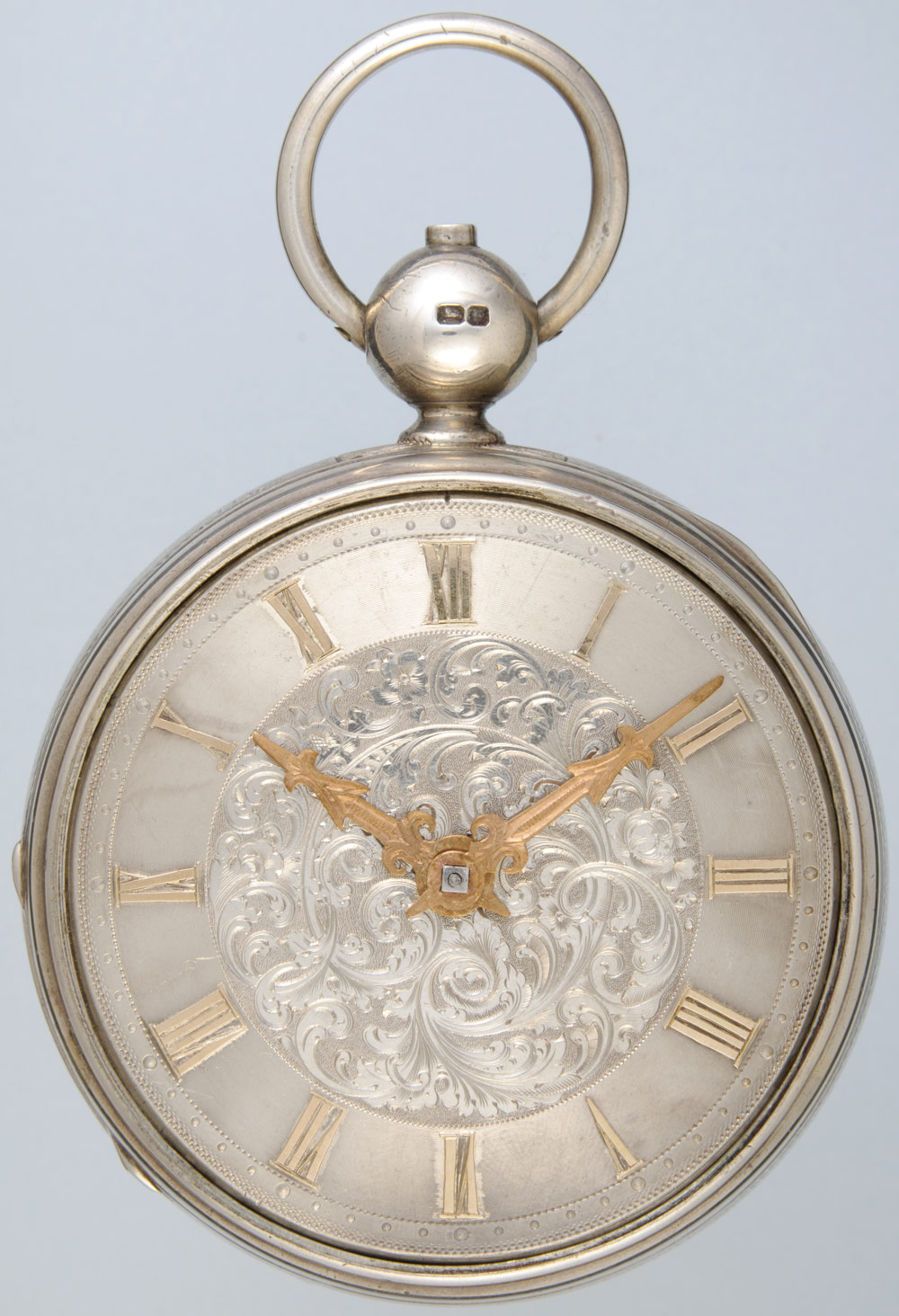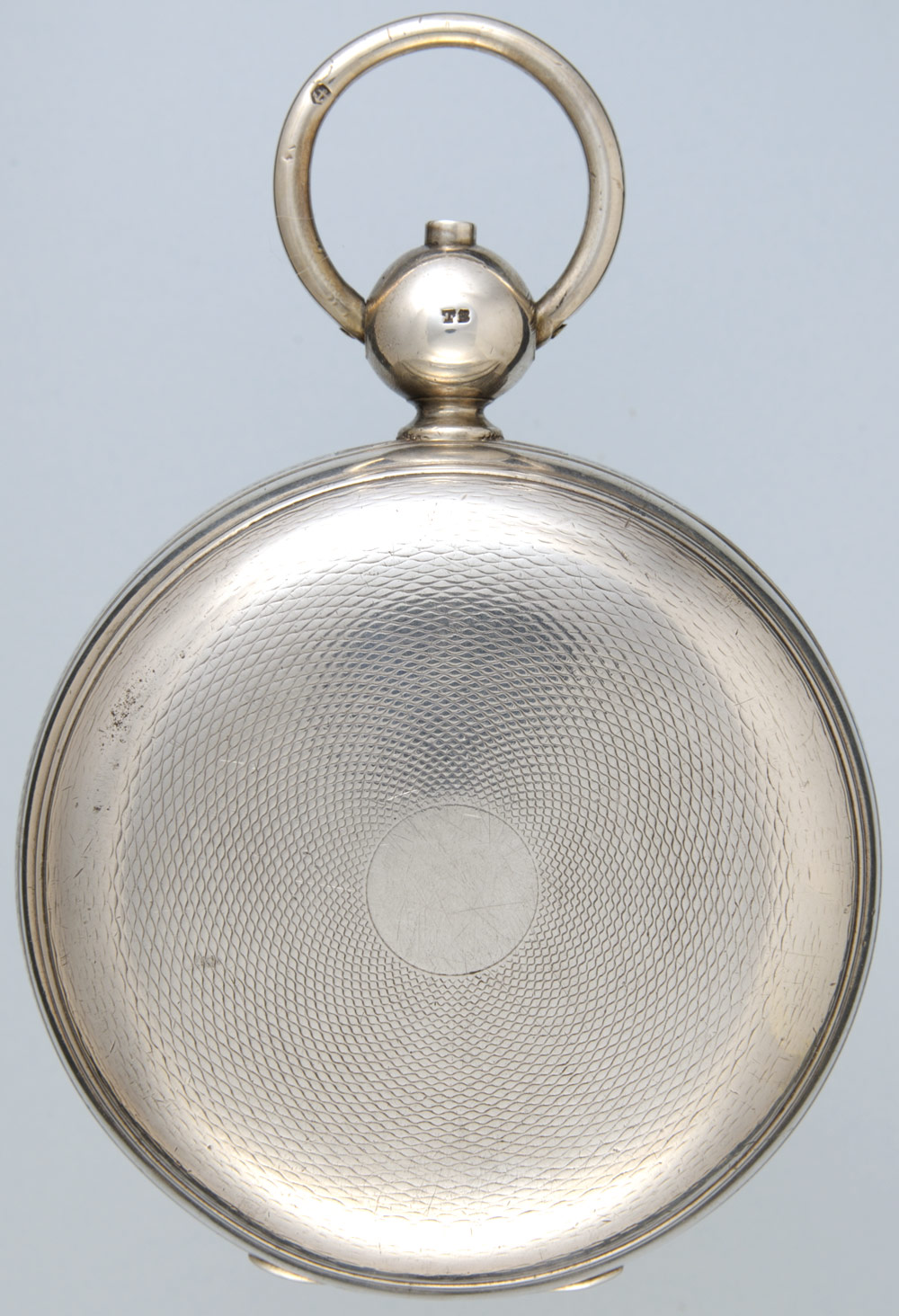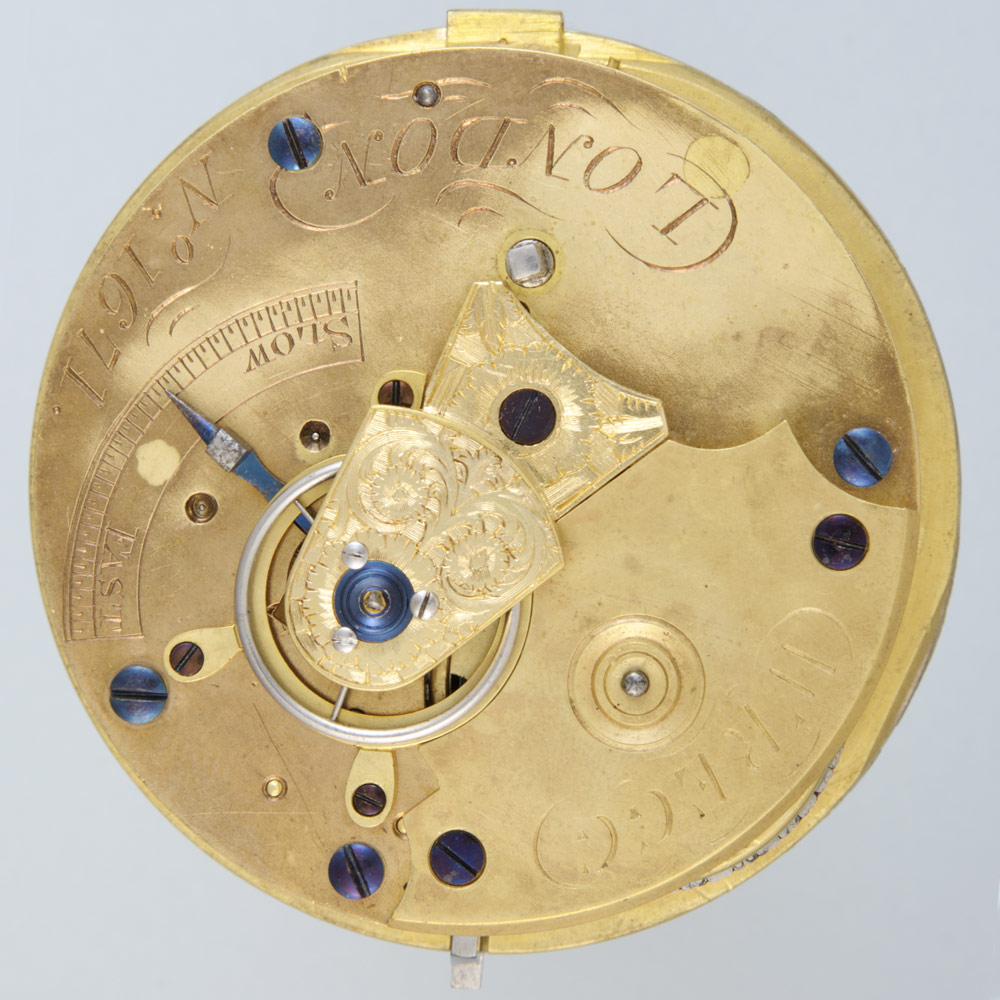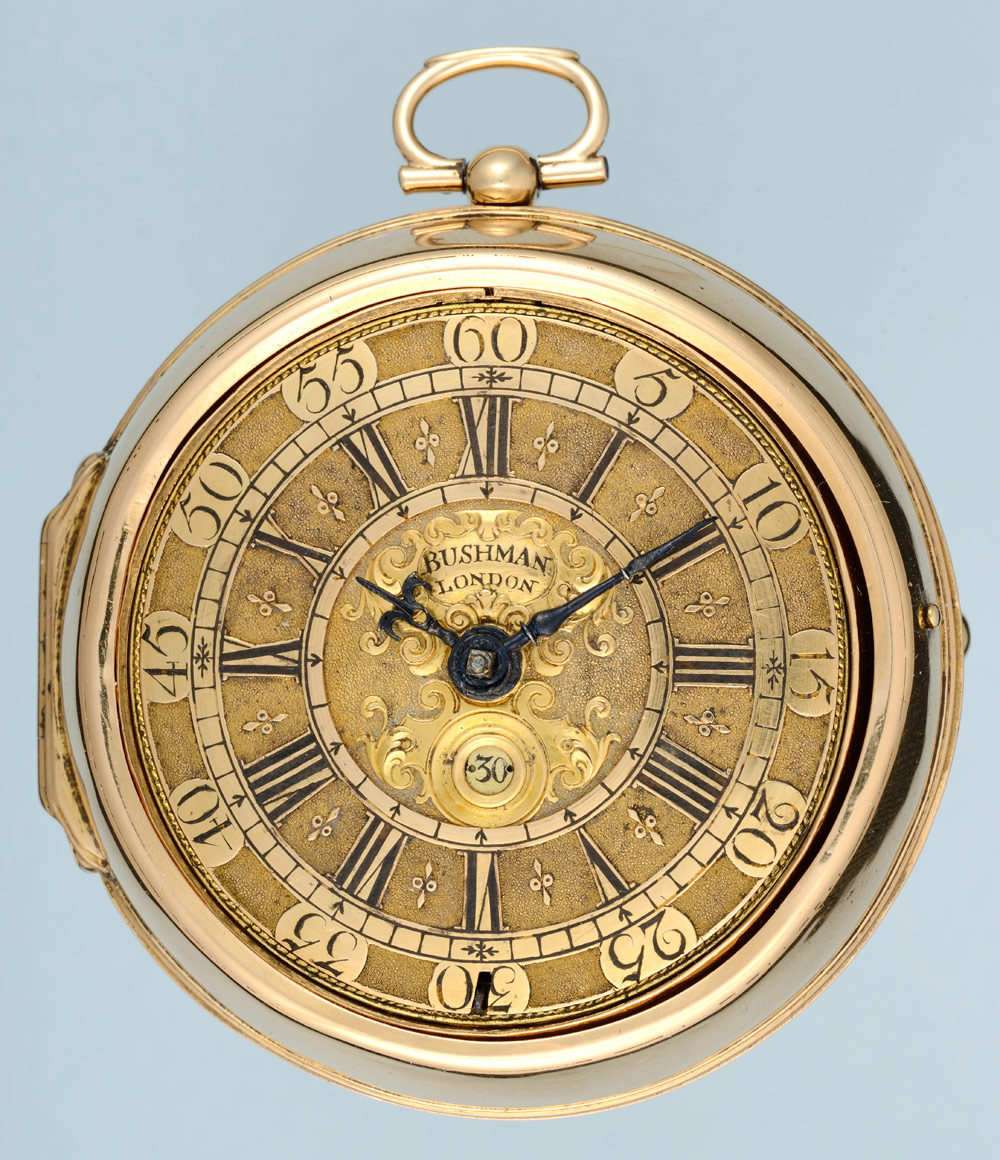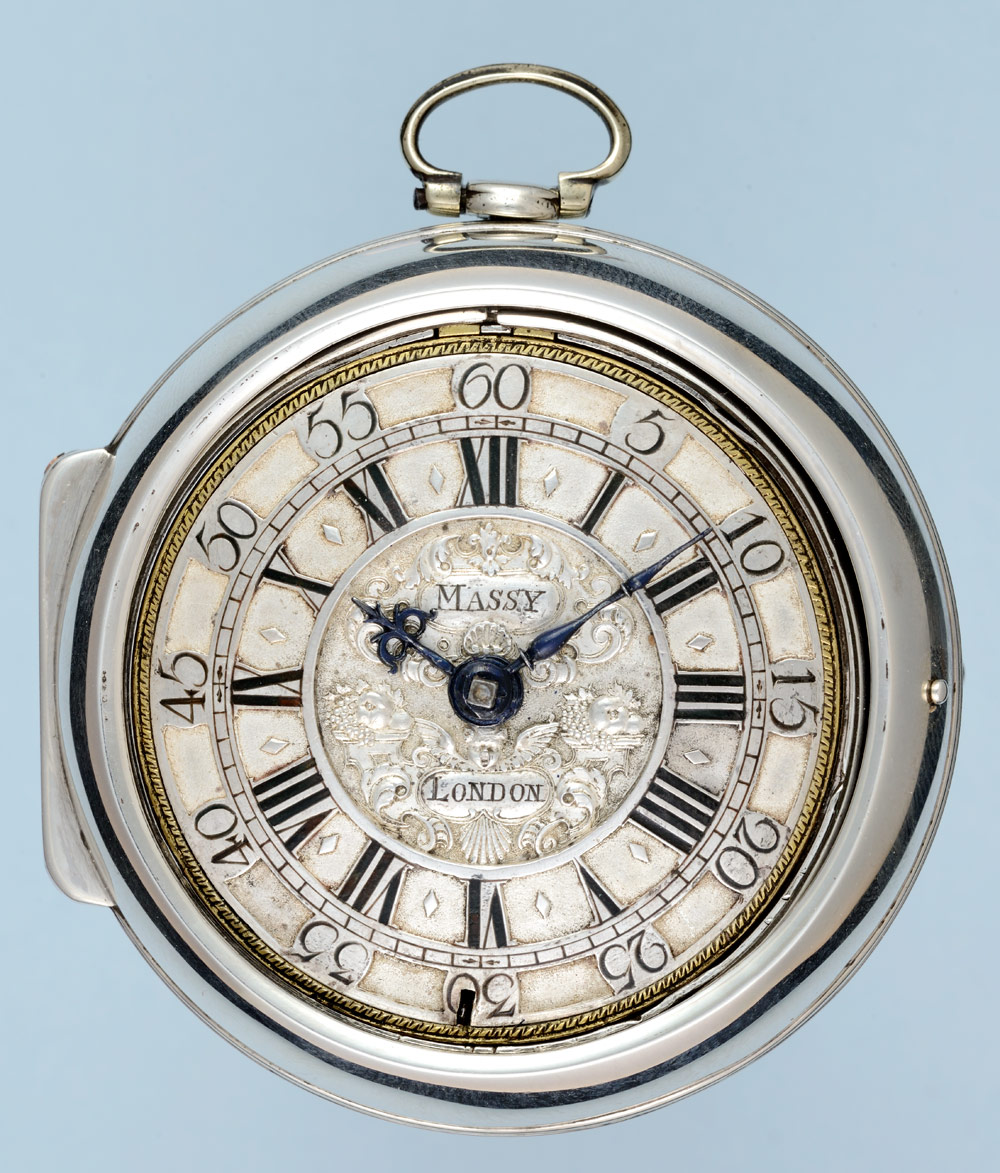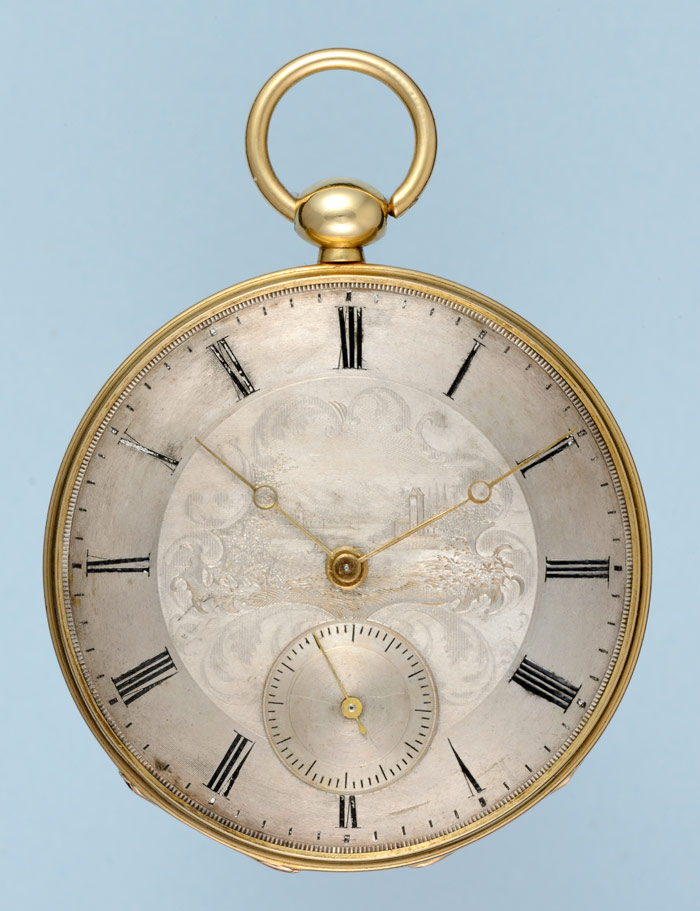A8243
Rare Dead Beat Verge Coachwatch
£3,750.00
Circa 1825
Out of stock
Description
A large rare early 19th Century English dead beat verge of four day duration in a silver open face case together with a matching stagecoach watch case. Large full plate gilt keywind movement, large fusee and barrel allowing the watch to run for four days. Engraved cock with diamond endstone, blue steel Bosley regulator, plain three arm steel balance with blue steel spiral hairspring. Rare form of dead beat verge escapement with little recoil. The escape wheel with long slender teeth and verge staff made from two steel cylinders with a flat cut into them joined by a turned brass staff. The tip of the escape wheel fall on the surface of the cylinder where it rests until it falls onto the flat and so gives impulse to the balance. Engine turned silver dial of unusually heavy gauge (approx. 1.5 mm thick) hallmarked Birmingham 1840. Decoratively engraved centre, applied gold Roman numerals, decorative gilt hands. Substantial large engine turned silver open face case with engine turned middle. Hallmarked Birmingham 1847, maker's mark “JH”. The watch is accompanied by a stagecoach watch case comprised of a brass bound square mahogany case with hinged flush handle and lock. This houses a drum shaped brass case with bayonet fit bezel, the dial signed “Wregg – London”. Now fitted with a later English three quarter plate fusee movement, the various parts of the case are scratched with the name “Wregg”. Although it looks small for the movement of the watch, this drum would accommodate it. The plugged winding hole and original three fixings are suitably placed. This is not however the original movement for this case.




